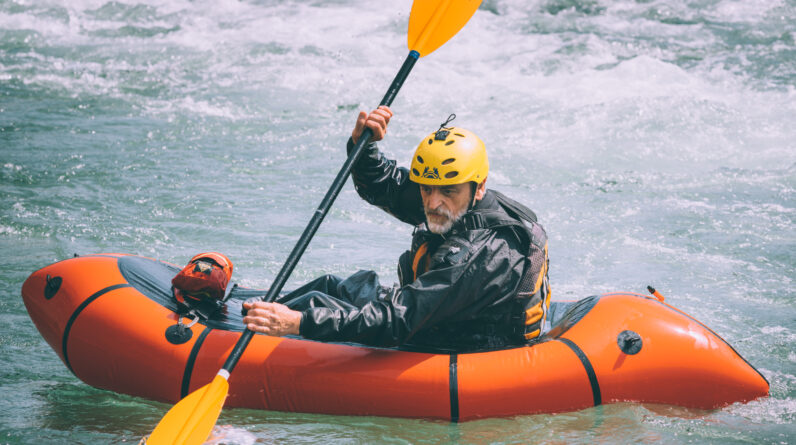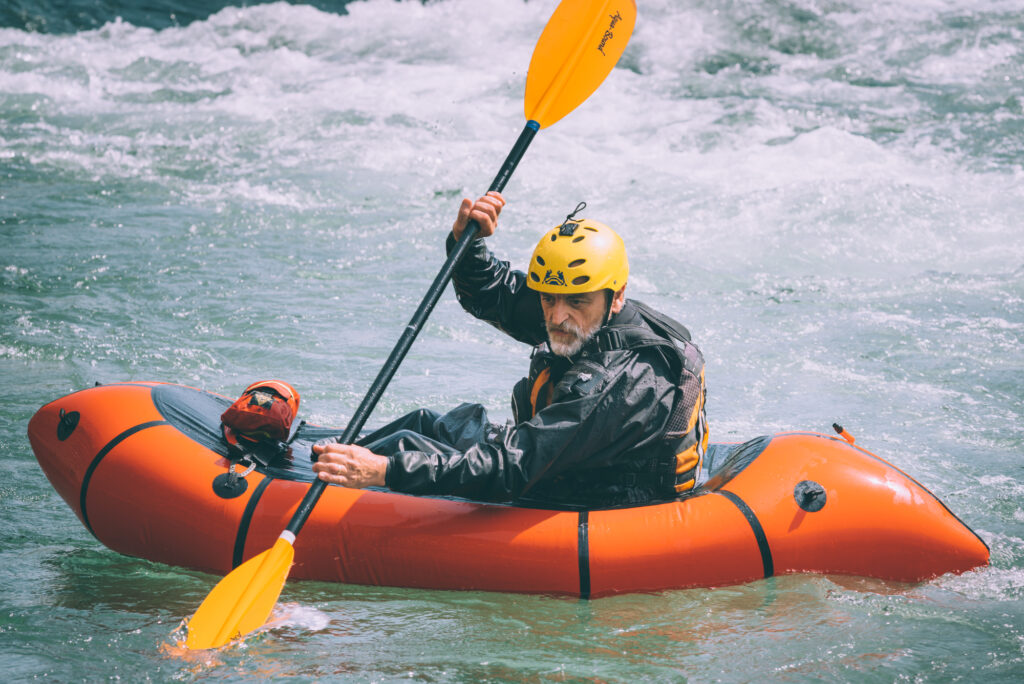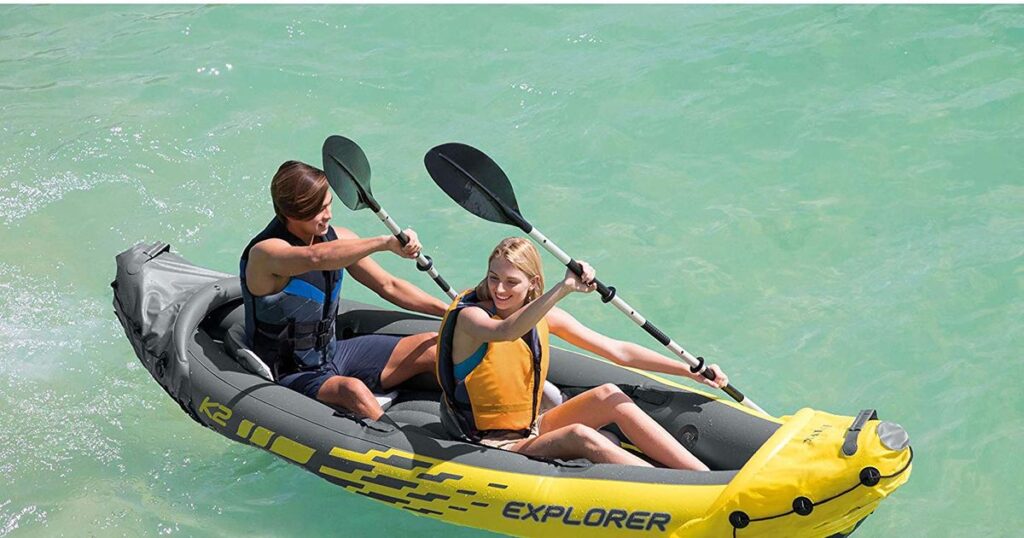
Have you ever wondered if inflatable kayaks are safe? Well, you’re not alone! Many people have concerns about the safety of these kayaks, especially compared to traditional hard-shell kayaks. In this article, we will delve into the topic of inflatable kayaks and address your worries. So, let’s get started!
When it comes to safety, inflatable kayaks have come a long way in recent years. Gone are the days when they were perceived as flimsy and unreliable. Modern inflatable kayaks are designed with high-quality materials and advanced technology to ensure a safe and enjoyable paddling experience. They are made from durable and puncture-resistant materials, such as PVC or Hypalon, which are specifically chosen to withstand different water conditions. Additionally, most inflatable kayaks are equipped with multiple air chambers, which provide an added level of safety. Even if one chamber gets damaged, the remaining chambers will keep the kayak afloat, giving you ample time to safely return to shore. In our upcoming article, we will discuss the various safety features and precautions you should take when using an inflatable kayak. So, stay tuned to find out more about how you can have a fun and safe adventure on the water with an inflatable kayak!

Understanding Inflatable Kayaks
In recent years, inflatable kayaks have gained popularity as a versatile and convenient alternative to traditional kayaks. With advances in technology and design, these inflatable watercrafts have become a viable option for outdoor enthusiasts and recreational paddlers alike. However, a common question that arises is, “Are inflatable kayaks safe?” In this article, we will delve into the world of inflatable kayaks, examining their features, safety considerations, benefits, and misconceptions. By the end, you’ll have a comprehensive understanding of whether inflatable kayaks are safe for your adventures on the water.
What are Inflatable Kayaks?
Inflatable kayaks, as the name suggests, are kayaks that can be inflated and deflated for ease of transport and storage. These kayaks are typically made using sturdy materials, such as PVC or Hypalon, and often incorporate multiple air chambers to enhance buoyancy and safety. They come in various shapes and sizes, offering options for solo paddlers, tandem paddlers, and even kayaks suitable for whitewater adventures.
Types of Inflatable Kayaks
There are several types of inflatable kayaks available in the market, each catering to different preferences and water conditions. Some popular types include recreational inflatable kayaks, touring inflatable kayaks, and whitewater inflatable kayaks. Recreational kayaks are designed for calm waters and are generally more affordable, making them a popular choice for beginners. Touring kayaks, on the other hand, offer better stability and tracking, making them perfect for longer trips or exploring various water bodies. Lastly, whitewater kayaks are specifically designed to withstand the challenges of fast-moving rivers and rapids, ensuring a thrilling experience for adrenaline junkies.
Safety Considerations for Inflatable Kayaks
When it comes to safety, inflatable kayaks offer several advantages over their traditional counterparts. Understanding the following considerations will help you make an informed decision about the safety of inflatable kayaks:
Stability and Buoyancy
One of the key concerns when it comes to kayaking is stability. Inflatable kayaks are designed to provide excellent stability, thanks to their wider bodies and multiple air chambers. This ensures a low risk of capsizing, especially in calm waters. Additionally, the buoyancy of inflatable kayaks offers an added safety measure, allowing paddlers to stay afloat even when faced with unexpected obstacles or accidents.
Material Durability
Contrary to common misconceptions, inflatable kayaks are made using durable materials that can withstand the rigors of the water. High-quality kayaks are typically constructed with puncture-resistant materials and reinforced seams, ensuring longevity and safety. Additionally, advancements in technology have led to the development of drop-stitch construction, wherein the inflatable kayak’s walls are reinforced with thousands of connecting threads, enhancing strength and durability.
Safety Precautions
While inflatable kayaks are designed to be safe, it is essential to adhere to a set of safety precautions. This includes wearing a personal flotation device (PFD), knowing and understanding the water conditions, paddling within your skill level, and ensuring proper inflation and assembly of the kayak. Adapting to changing weather conditions, avoiding risky maneuvers, and securing gear and equipment are also crucial aspects of ensuring a safe kayaking experience.

Examining the Benefits of Inflatable Kayaks
In addition to their safety considerations, inflatable kayaks offer a range of benefits that make them a popular choice among paddlers. Let’s explore some of these advantages:
Portability and Storage
One significant advantage of inflatable kayaks is their portability. Unlike traditional kayaks, which require a roof rack or a dedicated storage space, inflatable kayaks can be deflated and folded into a compact size. This makes them easy to transport in a car trunk or store in limited spaces, such as apartments or smaller houses.
Ease of Use
Another benefit of inflatable kayaks is their ease of use. Inflating and assembling an inflatable kayak typically requires minimal effort and can be done in a matter of minutes. This makes them accessible to paddlers of all skill levels, including beginners and those who prefer a hassle-free experience. Additionally, the lightweight nature of inflatable kayaks makes them easier to handle, especially during launches and landings.
Affordability
Compared to traditional kayaks, inflatable kayaks often come at a more affordable price point. This makes them an attractive option for individuals who want to experience kayaking without a significant financial investment. Moreover, minimal maintenance and repair costs make inflatable kayaks a cost-effective choice in the long run.
Comparing Inflatable Kayaks to Traditional Kayaks
Now, let’s compare inflatable kayaks to traditional kayaks across various aspects to understand their suitability in different scenarios:
Weight and Transportation
One of the primary considerations when choosing a kayak is the weight and transportation aspect. Traditional kayaks are generally heavier and may require additional equipment for transportation, such as roof racks or trailers. Inflatable kayaks, on the other hand, are lightweight and can be easily carried in a backpack or stowed in the trunk of a car. This makes them ideal for individuals who prefer spontaneous trips or have limited access to water bodies.
Performance on Different Water Bodies
The performance of a kayak can vary depending on the water body in which it is used. Traditional kayaks excel in open waters, offering better speed and tracking abilities. However, inflatable kayaks are more versatile and can handle different water conditions, including lakes, rivers, and even calm coastal waters. Some advanced inflatable kayaks even offer comparable performance to traditional kayaks, allowing for a wide range of paddling possibilities.
Cost and Maintenance
In terms of cost, traditional kayaks often come with a higher price tag due to their construction materials and design complexities. Additionally, maintenance costs can add up, especially when repairs or replacements are necessary. Inflatable kayaks, on the other hand, are generally more affordable and require minimal maintenance. This makes them an attractive option for budget-conscious paddlers or individuals looking for a low-maintenance kayak.

Common Misconceptions about Inflatable Kayaks
Despite the numerous advantages of inflatable kayaks, there are still some common misconceptions that persist. Let’s debunk a few of these myths:
Perceived Fragility
Many people mistakenly believe that inflatable kayaks are fragile and susceptible to punctures. While it is true that improper handling or sharp objects can potentially cause damage, high-quality inflatable kayaks are made from durable materials and are puncture-resistant. Following the manufacturer’s guidelines and exercising caution during use can significantly reduce the risk of punctures.
Puncture Resistance
Some paddlers worry that inflatable kayaks offer less puncture resistance than traditional kayaks made of hard materials. However, modern inflatable kayaks are designed using robust materials, such as PVC or Hypalon, that are resistant to punctures. Additionally, multiple air chambers in inflatable kayaks ensure that even if one chamber gets punctured, the kayak remains buoyant and easy to maneuver.
Limitations in Extreme Conditions
Inflatable kayaks are often perceived as unsuitable for extreme conditions, such as rough seas or strong currents. While it is true that certain models may not be specifically designed for extreme conditions, there are inflatable kayaks available that can handle more challenging water bodies. It is essential to choose the right type of inflatable kayak for the intended use and be aware of the kayak’s limitations to ensure a safe and enjoyable experience.
Tips for Ensuring Safety while Using Inflatable Kayaks
To fully enjoy the experience of kayaking with an inflatable kayak, it is important to prioritize safety. Here are some tips to ensure a safe kayaking adventure:
Proper Inflation and Assembly
Before setting out on the water, ensure that your inflatable kayak is properly inflated and assembled according to the manufacturer’s instructions. This involves checking the air pressure and ensuring that all valves are secure and sealed. Inspecting the kayak for any signs of damage or wear is also crucial to prevent any unexpected incidents during your trip.
Securing Gear and Equipment
When kayaking, it is important to secure your gear and equipment to prevent them from getting lost or causing instability. Use bungee cords or straps to secure items such as paddles, dry bags, or water bottles to the kayak. This ensures that you have everything you need within reach while maintaining balance and stability.
Adapting to Changing Weather
Weather conditions can change rapidly on the water, and it is vital to adapt and prepare accordingly. Monitor weather forecasts before your kayaking trip and be prepared for changes in wind, rain, or temperature. Dress appropriately, carry necessary safety gear such as a whistle or signaling device, and be prepared for emergency situations by knowing the locality’s paddling routes and possible exit points.

Inflatable Kayak Safety Regulations and Guidelines
To ensure safety while using inflatable kayaks, familiarize yourself with the following regulations and guidelines:
International Standards
Several international standards govern inflatable watercrafts, including inflatable kayaks. These standards cover aspects such as material quality, buoyancy, and construction requirements. Look for kayaks that meet these standards to ensure the utmost safety and quality.
Local Regulations
In addition to international standards, it is important to adhere to local regulations and guidelines set by the responsible authorities. Different regions may have specific requirements regarding equipment, licensing, or watercraft usage. Familiarize yourself with these regulations to ensure compliance and a safe paddling experience.
Industry Recommendations
The inflatable kayak industry provides guidelines and recommendations to ensure safe usage. Manufacturers often provide safety guidelines specific to their products, including assembly, maintenance, and recommended usage scenarios. Review these recommendations thoroughly to ensure safe and responsible kayaking practices.
Real-life Experiences with Inflatable Kayaks
To gain insights into the safety and performance of inflatable kayaks, let’s explore some real-life experiences of users:
Testimonials from Users
Numerous kayakers have shared positive experiences using inflatable kayaks. They highlight the ease of use, durability, and the ability to explore various water bodies. Users especially appreciate the portability and convenience offered by inflatable kayaks, enabling them to enjoy kayaking experiences in remote or less accessible locations.
Adventures and Challenges
While inflatable kayaks provide exciting opportunities for adventure, they also come with their fair share of challenges. Users have reported navigating through rough waters, encountering wildlife, and embarking on long-distance trips using inflatable kayaks. These experiences showcase the versatility and capabilities of inflatable kayaks in diverse scenarios.
Safety Incidents and Precautions
While inflatable kayaks are generally safe, it is important to acknowledge that accidents can happen in any watercraft. Users have shared incidents such as capsizing, equipment failure, or getting caught in adverse weather conditions. These incidents highlight the significance of practicing safety measures, maintaining equipment, and being prepared for any unexpected situations.

Conclusion
After examining the various aspects of inflatable kayaks, it is clear that they can provide a safe and enjoyable kayaking experience for individuals of all skill levels. With their stability, buoyancy, and durability, inflatable kayaks have become a reliable choice for recreational paddlers. By adhering to safety precautions, following regulations, and choosing a suitable inflatable kayak for the intended use, you can embark on exciting kayaking adventures with confidence. Remember, while there are risks involved in any water activity, understanding the benefits and balancing them with safety considerations will ensure a rewarding and safe experience on the water.







